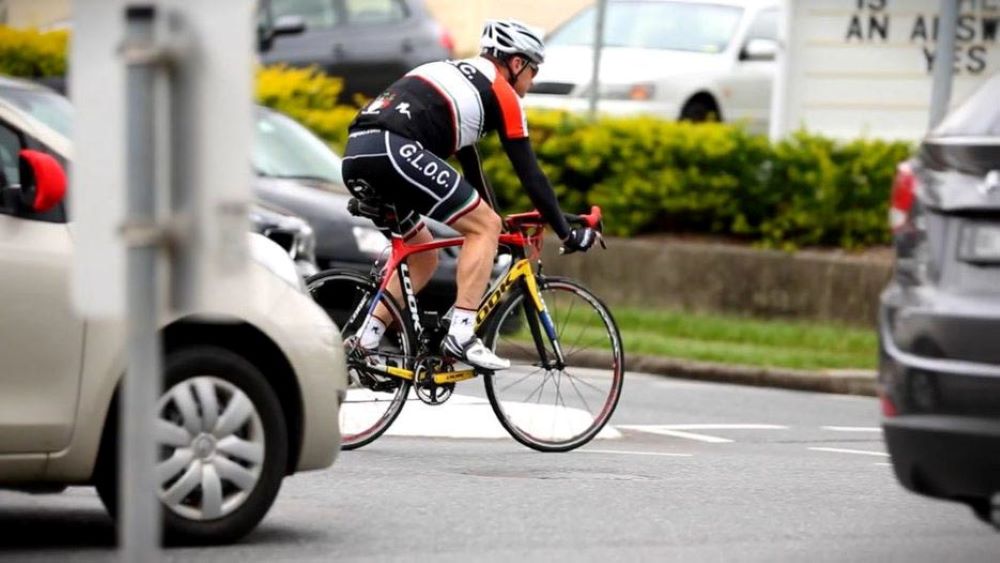Most commonly misunderstood bicycle rules

Both bicycles and cars are recognised as “vehicles” under the Queensland Road Rules. As such, users of both vehicle types have the right to safe, hassle-free travel. Unfortunately, crashes are still a frequent occurrence.
Common causes of bicycle-related crashes
Some of the most common crash causes involving cyclists and motorists include:
- Motorists failing to give way to cyclists when exiting side streets and driveways.
- Motorists turning left or right and cutting off a cyclist on the kerb side.
- Motorists overtaking too closely to cyclists.
Rules for sharing the road
When the speed limit is 60km/h or under, the minimum passing distance for motorists is at least a 1m gap between their vehicle and cyclists. If the speed limit is over 60km/h, this gap must be extended to at least 1.5m. Doing this allows enough space for both users to share the road in a safe manner.

It is strongly recommended for motorists to always look for cyclists and give-way when moving across lanes or turning into intersections and driveways. Cyclists are reminded that they must not ride within 2m of a moving motor vehicle continuously for more than 200m. They must leave a 2m gap between themselves and the motor vehicle in front of them, when following the vehicle for over 200m. If you choose to ride next to another cyclist, you must remain no more than 1.5m apart.
E-scooters and other personal mobility devices (PMD) such as e-skateboards are allowed on bike lanes on roads with a speed limit of 50km/h or less. This is accepted under the assumption that they are appropriately equipped with a working bell and stopping mechanism and abide by other PMD road rules.
How to negotiate roundabouts on a bike
When a cyclist enters a multi-lane roundabout, they are allowed to turn right from either the left or right lane. If they choose to turn right from the left lane, the cyclist is required to give way to any vehicle that is wanting to leave the roundabout. If you are on the roundabout and a motorist is entering, they must give way to you.

Can I ride my bike on a footpath?
In Queensland, cyclists are allowed to ride on footpaths, unless a ‘No bicycles’ sign is displayed.
Cyclists riding on footpaths must give way to pedestrians, keep to the left and ride in a safe manner. This also includes personal mobility devices such as e-scooters.
Cyclists who wish to ride on footpaths are encouraged to slow down, in order to reduce the risk of endangering other footpath users.
What to do at road crossings
According to the Queensland Government, cyclists are allowed to ride across pedestrian crossings at traffic lights. They must wait for the green ‘walk’ signal, keep left, and proceed slowly and safely, giving way to any pedestrians on the crossing.
This is the same for zebra crossings and children’s crossings, however, cyclists and PMD riders are required to come to a complete stop before riding across.
What helmet should cyclists wear?
When choosing to ride a bicycle, riders must comply with specified helmet standards. Failure to do so will result in a $161 fine.
Approved bicycle helmet standards will have a sticker on the helmet with one of the following:
- AS 2063
- AS/NZS 2063
- EN 1078
- CPSC 16
- ASTM F1447
- Snell B-95
Cyclists should be aware of all the rules and fines that can be applied to them before hitting the road.
Related topics
Things to note
The information in this article has been prepared for general information purposes only and is not intended as legal advice or specific advice to any particular person. Any advice contained in the document is general advice, not intended as legal advice or professional advice and does not take into account any person’s particular circumstances. Before acting on anything based on this advice you should consider its appropriateness to you, having regard to your objectives and needs.
Insurance Products (excluding Travel Insurance) are issued by RACQ Insurance Limited ABN 50 009 704 152 (RACQI) and arranged by its agent, RACQ Distribution Services Pty Ltd (RDS) ABN 35 116 361 650, AFSL 567130 and RDS' authorised representatives (including RACQ Operations Pty Ltd ABN 80 009 663 414, AR No. 234978 (RACQO). Conditions, limits and exclusions apply. RDS and RACQO are in the RACQ group of companies. One of the companies in the RACQ group of companies has a minority shareholding in RACQI.
RDS and RACQO have not taken your personal objectives, circumstances or needs into account when preparing advice regarding insurance products and you will need to consider whether the advice is appropriate for you. Read the Product Disclosure Statement (PDS) and any applicable Supplementary PDS before making a purchase decision on this product. You can also access our Target Market Determinations on this website. RDS receives a commission from RACQI for the policies it arranges. RACQO receives fees paid for services it provides to RDS. Further details about remuneration are available on request prior to purchasing.
Banking and loan products issued by Members Banking Group Limited ABN 83 087 651 054 AFSL/Australian credit licence 241195 trading as RACQ Bank. Terms, conditions, fees, charges and lending policies apply. This is general advice only and may not be right for you. This information does not take your personal objectives, circumstances or needs into account. Read the disclosure documents for your selected product or service, including the Financial Services Guide and the Terms and Conditions, and consider if appropriate for you before deciding.
Except for RACQ Bank, any RACQ entity referred to on this page is not an authorised deposit-taking institution for the purposes of the Banking Act 1959 (Cth). That entity’s obligations do not represent deposits or other liabilities of RACQ Bank. RACQ Bank does not guarantee or otherwise provide assurance in respect of the obligations of that entity, unless noted otherwise.
RACQ Bank subscribes to the Customer Owned Banking Code of Practice which establishes higher standards than the law requires. The Code reflects modern consumer expectations and developments in approaches to issues such as consumer vulnerability, guarantors, and supporting customers through financial hardship. Please read our Customer Owned Banking Code of Practice page for more information.
RACQ Operations Pty Ltd (ABN 80 009 663 414 AR 000234978) and Members Travel Group Pty Ltd (ABN 45 144 538 803 AR 000432492) are acting as an Authorised Representative of the issuer of the insurance, Tokio Marine & Nichido Fire Insurance Co., Ltd. (ABN 80 000 438 291 AFSL 246 548). Any advice set out above is general in nature only, and does not take into account your objectives, financial situation or needs. Before purchasing any travel products, please consider the RACQ Travel Insurance Product Disclosure Statement (PDS) and the Target Market Determinations (TMDs) that apply to these products. Whilst the PDS outlines the Terms and Conditions of these products, the TMDs outline the intended class of customers that comprise the target market for these travel products. This will allow you to consider which products best suit your objectives, financial situation and needs and consider the products appropriateness to your personal circumstances. TMDs also outline matters involving the distribution and the review of these products. The PDS, Supplementary PDS and TMDs for each travel product can be found here.
